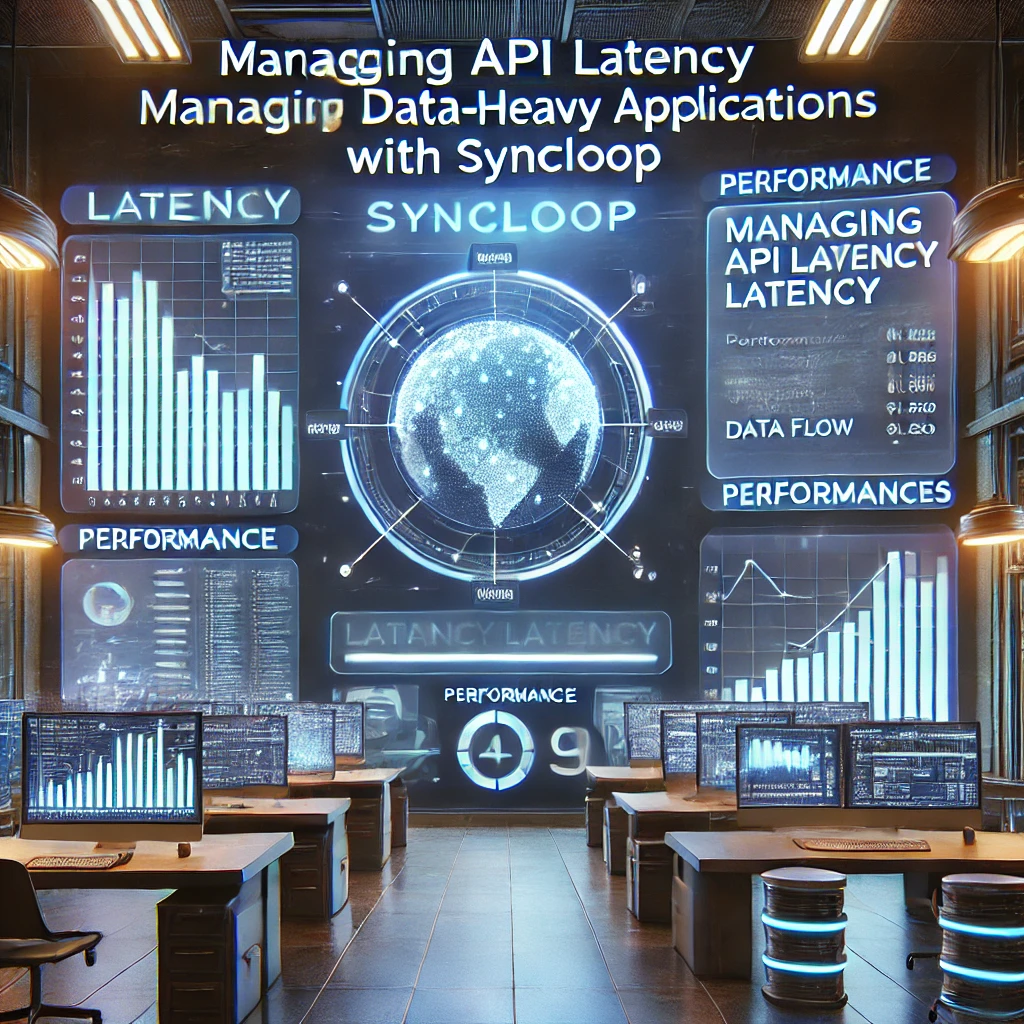Managing API Latency for Data-Heavy Applications with Syncloop

The Impact of API Latency on Data-Heavy Applications
Data-heavy applications often deal with large payloads, complex queries, and high-frequency requests. High latency in these scenarios can:
- Affect User Experience: Slow response times lead to frustration and potential churn.
- Reduce Throughput: Latency bottlenecks limit the number of requests processed efficiently.
- Increase Costs: Inefficient workflows result in higher resource usage.
- Disrupt Real-Time Operations: Delays can impact critical functionalities like live tracking or instant notifications.
Managing latency involves optimizing data flow, reducing processing overhead, and ensuring scalability—all of which are enabled by Syncloop.
How Syncloop Reduces API Latency
1. Optimized Workflows
Syncloop enables developers to design streamlined workflows using tools like Ifelse, Await, and Transformers. These tools ensure that data is processed efficiently and without unnecessary steps.
2. Data Caching
By leveraging caching, Syncloop reduces the need for repetitive API calls, significantly improving response times for frequently accessed data.
3. Batch Processing
Syncloop supports batching API requests and responses, minimizing the number of network calls and reducing overhead.
4. Load Balancing
Syncloop’s scalable API gateways distribute traffic evenly across servers, preventing overload and ensuring consistent response times.
5. Asynchronous Processing
With Await controls, Syncloop enables asynchronous task handling, allowing other processes to continue while waiting for specific API responses.
6. Real-Time Monitoring and Analytics
Track latency metrics in real-time using Syncloop’s monitoring tools. Detailed insights help identify bottlenecks and optimize workflows.
Steps to Manage API Latency with Syncloop
Step 1: Analyze Current Latency
Use Syncloop’s monitoring tools to track API performance. Identify endpoints with high response times and determine their root causes.
Step 2: Optimize Workflows
Streamline workflows by:
- Reducing Steps: Eliminate redundant processing steps.
- Leveraging Transformers: Standardize data formats for faster processing.
- Using Conditional Logic: Apply Ifelse controls to handle specific scenarios efficiently.
Step 3: Implement Caching
Enable caching for static or frequently accessed data. Configure cache expiration rules to ensure data remains accurate and up-to-date.
Step 4: Scale Resources Dynamically
Use Syncloop’s scalable gateways to handle increased traffic during peak times, ensuring consistent performance under heavy loads.
Step 5: Test for Scalability
Simulate high-traffic scenarios to evaluate how your APIs perform under stress. Refine workflows based on test results.
Step 6: Monitor Continuously
Track real-time metrics like latency, throughput, and error rates using Syncloop’s monitoring dashboard. Use alerts to detect and resolve issues proactively.
Real-World Applications
1. Streaming Services
Manage latency for high-volume requests like video streaming or music playback, ensuring users experience minimal buffering.
2. E-Commerce Platforms
Optimize workflows for product search, recommendations, and checkout processes to provide fast and reliable user interactions.
3. IoT Systems
Handle large data streams from IoT devices efficiently, enabling real-time monitoring and control.
4. Financial Services
Ensure low-latency responses for payment gateways, fraud detection, and real-time trading systems.
Best Practices for Managing API Latency
- Leverage Asynchronous Processing: Use Await controls to handle long-running tasks without blocking workflows.
- Enable Caching Strategically: Cache data that doesn’t change frequently to reduce API calls.
- Optimize Payloads: Minimize data size by removing unnecessary fields or compressing payloads.
- Design for Scalability: Use Syncloop’s load balancing and scaling features to handle traffic spikes effectively.
- Monitor Regularly: Continuously monitor latency metrics and optimize workflows based on real-time insights.
Why Syncloop Excels in Managing API Latency
Syncloop combines advanced workflow tools, real-time monitoring, and scalable infrastructure to address latency challenges in data-heavy applications. Its intuitive interface and robust features make it an ideal choice for developers looking to optimize API performance.
Conclusion
API latency can significantly impact the performance of data-heavy applications. Syncloop provides the tools and insights needed to minimize latency, ensuring seamless operations and improved user satisfaction. By leveraging Syncloop’s features, developers can build efficient, scalable, and high-performing API ecosystems that meet the demands of modern applications.
Back to Blogs